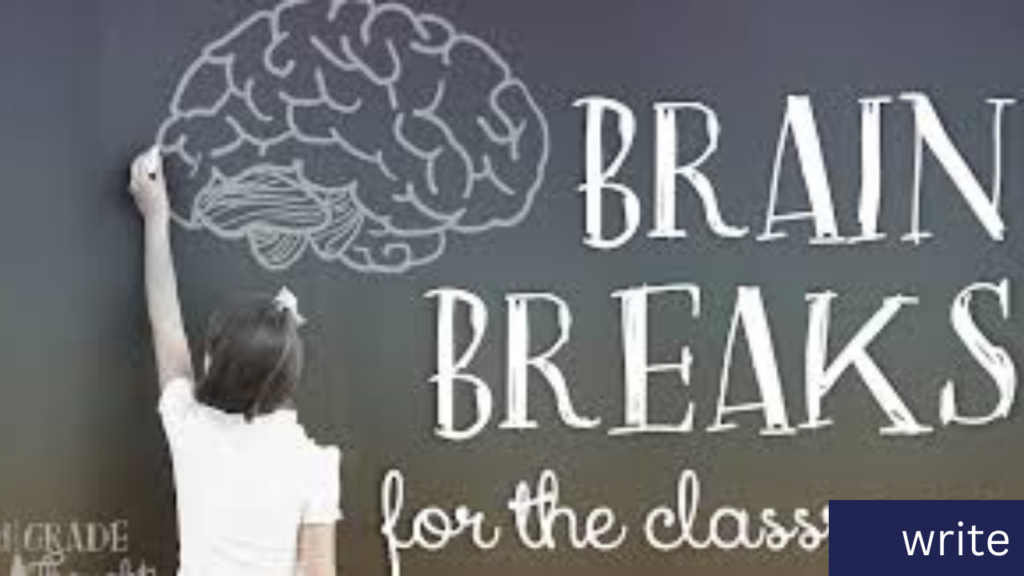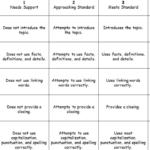Keeping 4th graders engaged in the classroom can be a challenge, especially with their boundless energy and growing need for movement. Brain breaks are short, structured activities that help students refresh their minds, increase focus, and improve overall classroom behavior. These breaks, lasting between 2-5 minutes, are ideal for recharging students every 30-60 minutes. They can be physical, mental, creative, or social, offering a variety of benefits for young learners.
Physical Brain Breaks
Physical activity is a great way to help students release pent-up energy and improve concentration. These quick exercises can be done right at their desks or in a designated area of the classroom:
- Quick Stretching – Have students reach for the sky, do toe touches, or side stretches to loosen up their muscles.
- Dance Party – Play an upbeat song and let students dance for a minute or two to shake off stress.
- Simon Says – A classic game that encourages active listening and movement.
- Animal Walks – Challenge students to walk like a bear, hop like a frog, or crawl like a crab across the room.
- Freeze Dance – Play music and have students dance; they must freeze when the music stops.
Mental Brain Breaks
Sometimes, students need a moment of quiet reflection or a mental challenge to refocus their minds:
- 5-4-3-2-1 Senses Check – Have students identify 5 things they see, 4 they hear, 3 they feel, 2 they smell, and 1 they taste.
- Deep Breathing – Guide students through balloon breathing or belly breaths to calm their minds.
- Mindful Coloring – Provide a minute or two for students to color or doodle freely.
- Riddle or Puzzle Challenge – Present a fun riddle or brain teaser to encourage critical thinking.
- Silent Meditation – Have students close their eyes and focus on their breathing for a peaceful moment.
Creative Brain Breaks
Creativity helps keep students engaged and fosters problem-solving skills. These breaks allow students to use their imaginations:
- Doodle Challenge – Give students one minute to draw something fun or silly.
- Story Chain – Start a story and have each student add a sentence.
- Act It Out – Play charades with simple words or phrases.
- Build with Classroom Items – Let students construct something using paper, blocks, or other supplies.
- Funny Faces Contest – Have a quick contest to see who can make the silliest face.
Social Brain Breaks
Social interaction is important for emotional development. These breaks encourage teamwork and communication:
- Partner High-Fives – Have students give quick high-fives to a few classmates to boost energy.
- Would You Rather? – Pose fun questions that get students thinking and talking.
- Compliment Circle – Each student gives a kind word to a classmate.
- Group Rock-Paper-Scissors – Have the entire class play together for a fun challenge.
- Secret Handshake Creation – Let students team up to create unique handshakes.
Movement-Based Brain Breaks
- Dance Party – Play an upbeat song and let students dance for 2–3 minutes.
- Simon Says – Classic game that gets kids moving and thinking.
- Jumping Jacks Challenge – See how many they can do in 30 seconds.
- Animal Walks – Move like different animals (bear crawl, frog jumps, crab walk).
- Freeze Dance – Dance to music, freeze when the music stops.
- Run in Place – 30 seconds of fast running in place.
- Yoga Poses – Teach simple poses like tree, downward dog, and warrior.
- Stretching Routine – Reach for the sky, touch toes, side stretches.
- Chair Exercises – Leg lifts, arm circles, seated twists.
- Air Writing – Use fingers to write words in the air with big movements.

Mindfulness & Relaxation Brain Breaks
- Deep Breathing – Breathe in for 4 counts, hold, and breathe out for 4 counts.
- Five Senses Check-In – Notice things you see, hear, feel, smell, and taste.
- Muscle Tension & Relaxation – Tense and relax different muscle groups.
- Silent Listening – Sit quietly and list all the sounds you hear.
- Guided Visualization – Imagine being on a beach or in a forest.
- Gratitude Moment – Share one thing you’re grateful for.
- Finger Tracing – Trace a figure-eight pattern on your palm.
- Mindful Coloring – Spend a few minutes coloring quietly.
- Balloon Breathing – Pretend to blow up a balloon and let it deflate slowly.
- Affirmation Chant – Repeat positive affirmations aloud.
Creative & Thinking Brain Breaks
- Quick Draw – Draw something in 1 minute based on a given prompt.
- Story Starter – Start a story and let students add sentences.
- Would You Rather? – Give two fun choices and let them decide.
- Rhyme Time – Say a word and come up with as many rhymes as possible.
- Act It Out – Silent acting while others guess what they’re doing.
- Mystery Object – Describe an object and have others guess what it is.
- Silly Sentences – Each person adds a silly word to create a funny sentence.
- Finish the Doodle – Start a doodle and have them finish it creatively.
- Fast Math – Quick mental math challenges.
- Opposites Game – Say a word, and students say its opposite.
Related Article : 60 Best Silly Writing Prompts for Kids
Social & Partner Brain Breaks
- High-Five Chain – High-five three different classmates.
- Pair Share – Tell a partner something interesting about your day.
- Pass the Clap – Try to pass a hand clap around the circle as fast as possible.
- Secret Handshake – Create a handshake with a partner.
- Back-to-Back Drawing – One person describes an image while the other draws it.
- Mirroring Game – One partner moves while the other copies exactly.
- Joke Time – Each student tells a joke.
- Compliment Circle – Give a compliment to the person next to you.
- Silent Countdown – See if the class can count to 20 with only one person speaking at a time.
- Charades – Act out different words or phrases.
Outdoor Brain Breaks
- Walk and Talk – Take a short walk outside while chatting with a friend.
- Scavenger Hunt – Find certain colors, shapes, or textures outside.
- Hopscotch – Play a quick game outside.
- Shadow Tag – Chase shadows instead of tagging bodies.
- Nature Sketching – Draw something interesting outside.
- Cloud Watching – Lie on the ground and describe cloud shapes.
- Obstacle Course – Set up a simple running or jumping course.
- Leaf Rubbing – Find leaves and do rubbings with crayons.
- Follow the Leader – One student leads different movements.
- Sidewalk Chalk – Draw or write positive messages.
Fun & Silly Brain Breaks
- Wacky Walks – Walk across the room in a funny way.
- Opposite Day – Answer questions using opposite words.
- Slow-Motion Race – Who can walk the slowest without stopping?
- Laugh Chain – One student starts laughing, and others join in.
- Silly Faces – Make the silliest face you can.
- Backward Name Game – Say your name backward.
- Air Guitar Contest – Pretend to play guitar like a rock star.
- Funny Voice Reading – Read a sentence using a goofy voice.
- Imaginary Jump Rope – Pretend to jump rope.
- Crazy Countdown – Count down from 10 in different silly voices.
Conclusion
Brain breaks play a crucial role in keeping 4th graders engaged and ready to learn. By incorporating a mix of physical, mental, creative, and social activities, teachers can help students maintain focus, improve their moods, and encourage better classroom participation. Implementing these short breaks throughout the day can lead to a more energized and productive learning environment. Additionally, allowing students to take turns leading brain breaks can foster leadership and responsibility in the classroom.
FAQs
Q: How often should brain breaks be used in a 4th-grade classroom?
A: Brain breaks should be used every 30-60 minutes, depending on the energy levels and focus of the students.
Q: How long should a brain break last?
A: Brain breaks typically last between 2-5 minutes to ensure students get refreshed without losing too much instructional time.
Q: Can brain breaks be used as a reward?
A: Yes! Brain breaks can serve as a fun incentive for good behavior or completing tasks efficiently, but they should also be integrated into the routine to support learning.
Q: What if students get too excited after a brain break?
A: To transition smoothly, try a calming activity like deep breathing or silent meditation after a high-energy break.
Q: Can students lead brain breaks?
A: Absolutely! Allowing students to take turns leading brain breaks fosters responsibility, engagement, and leadership skills.


